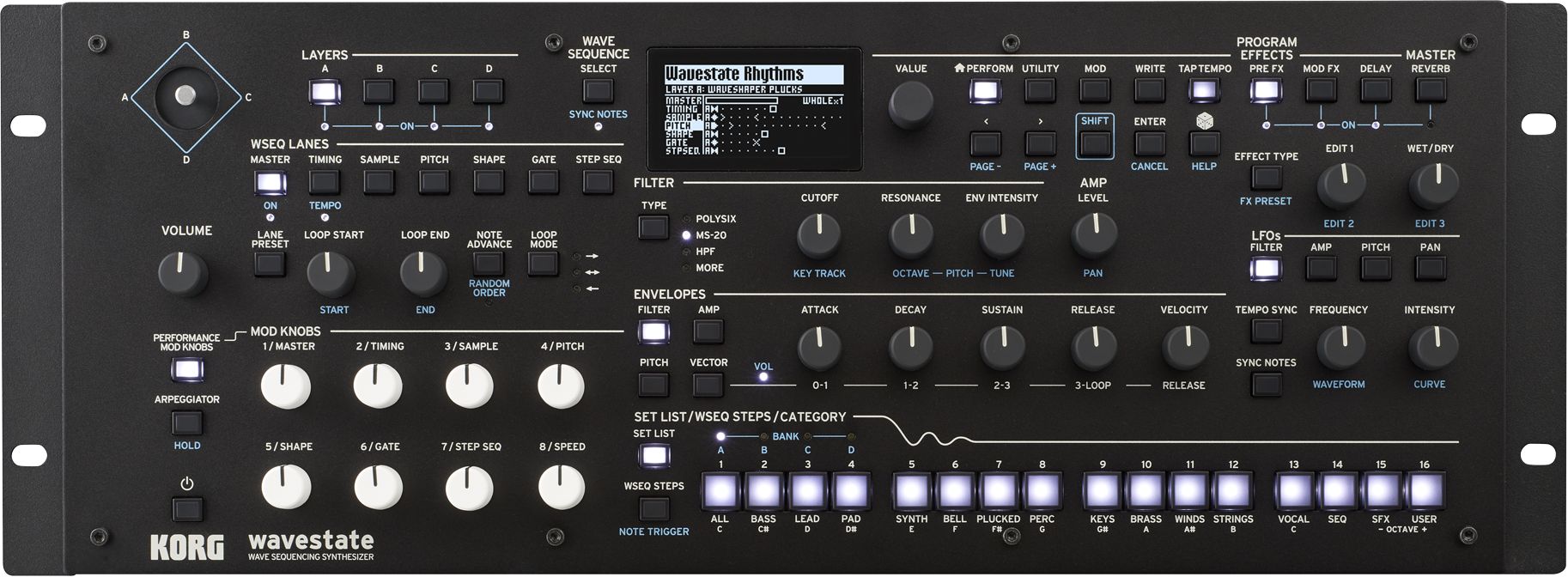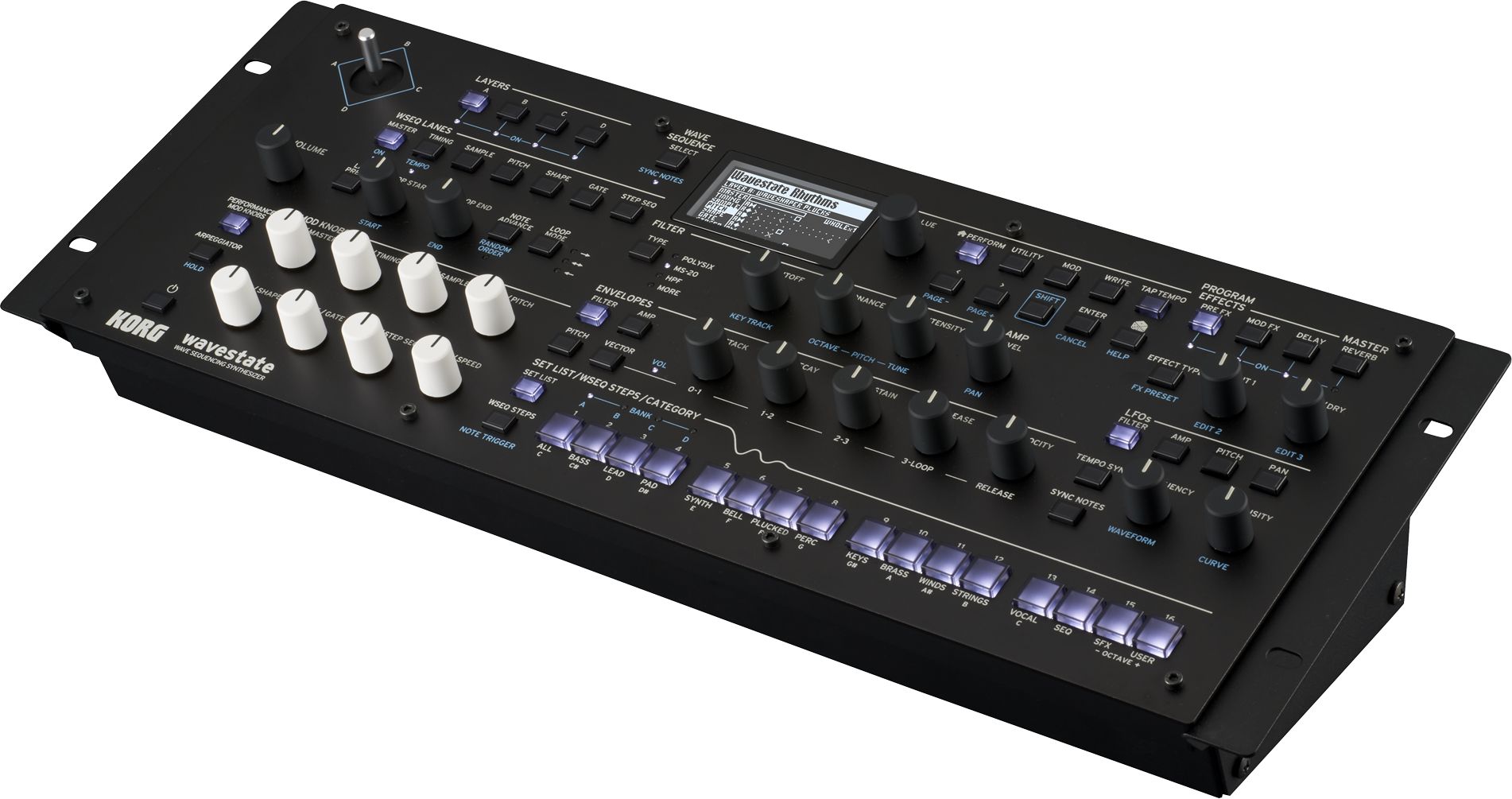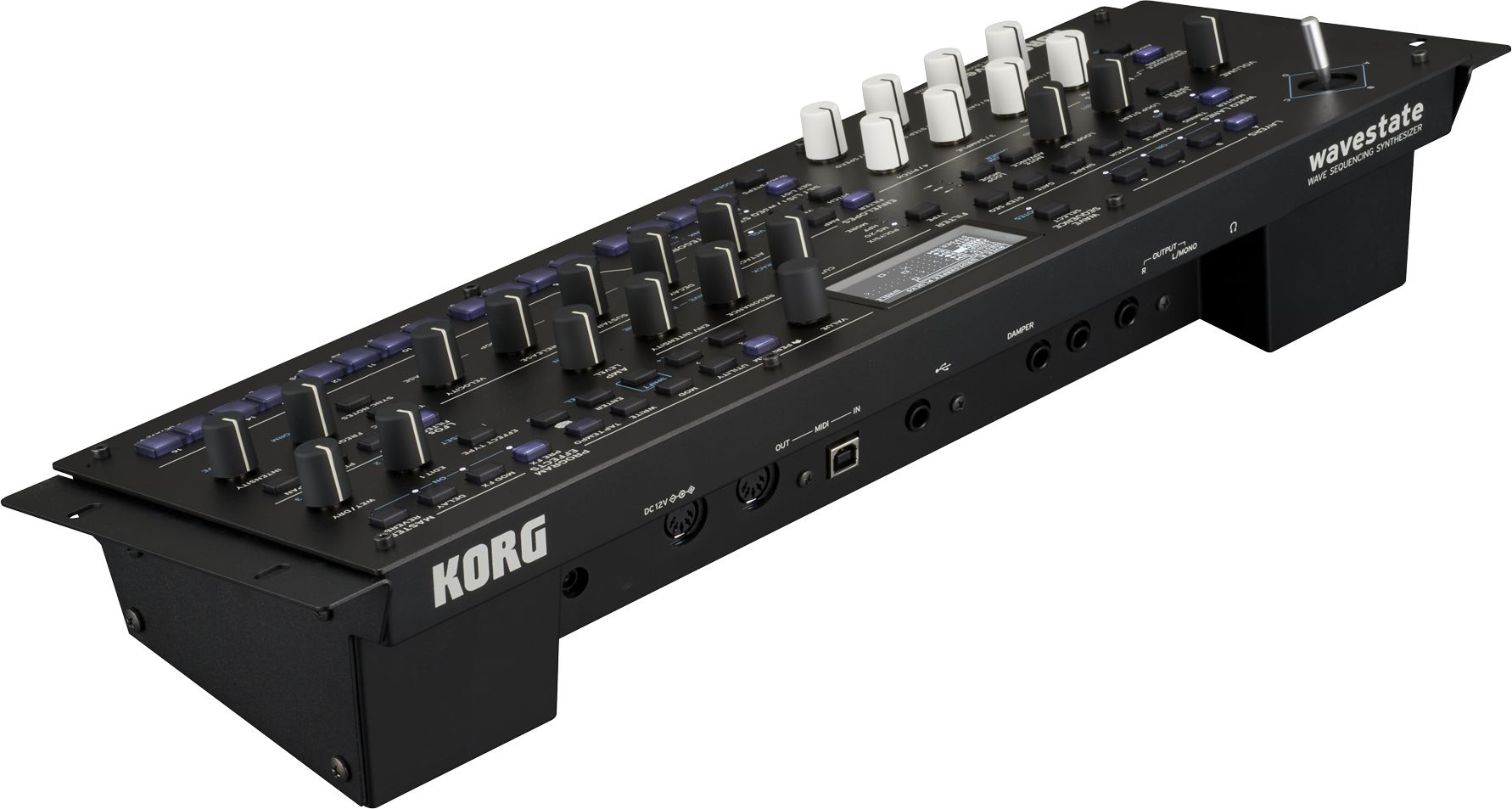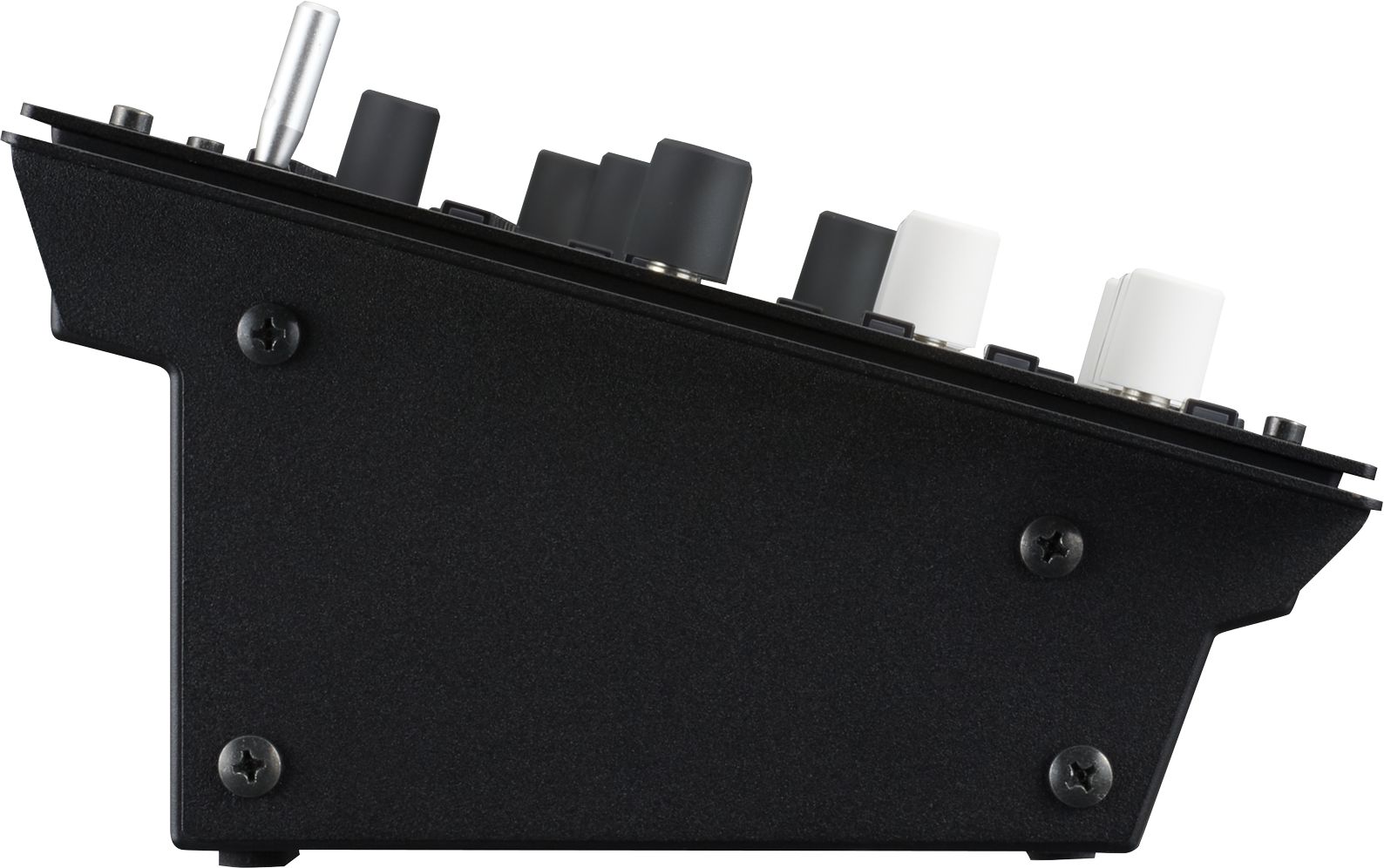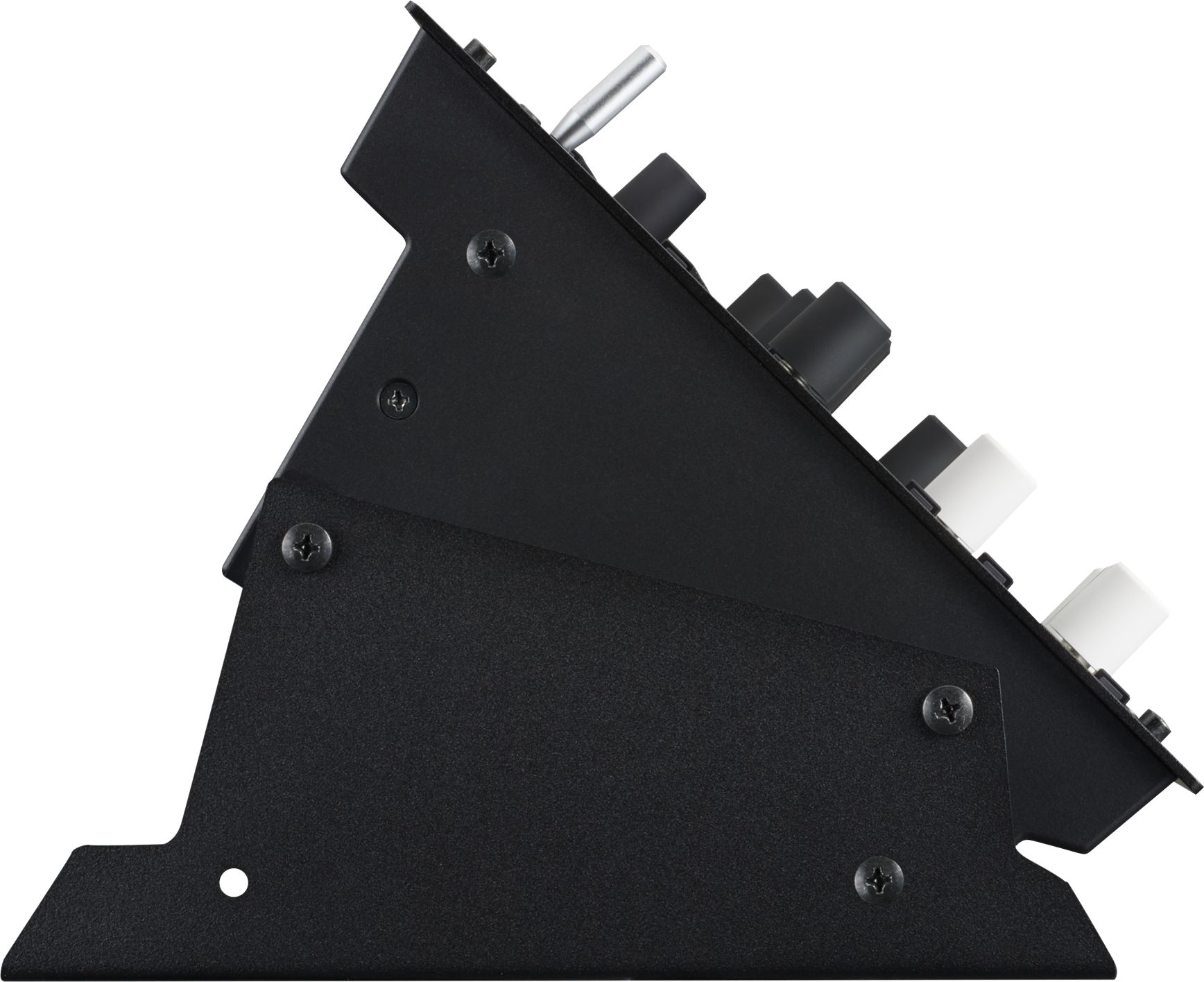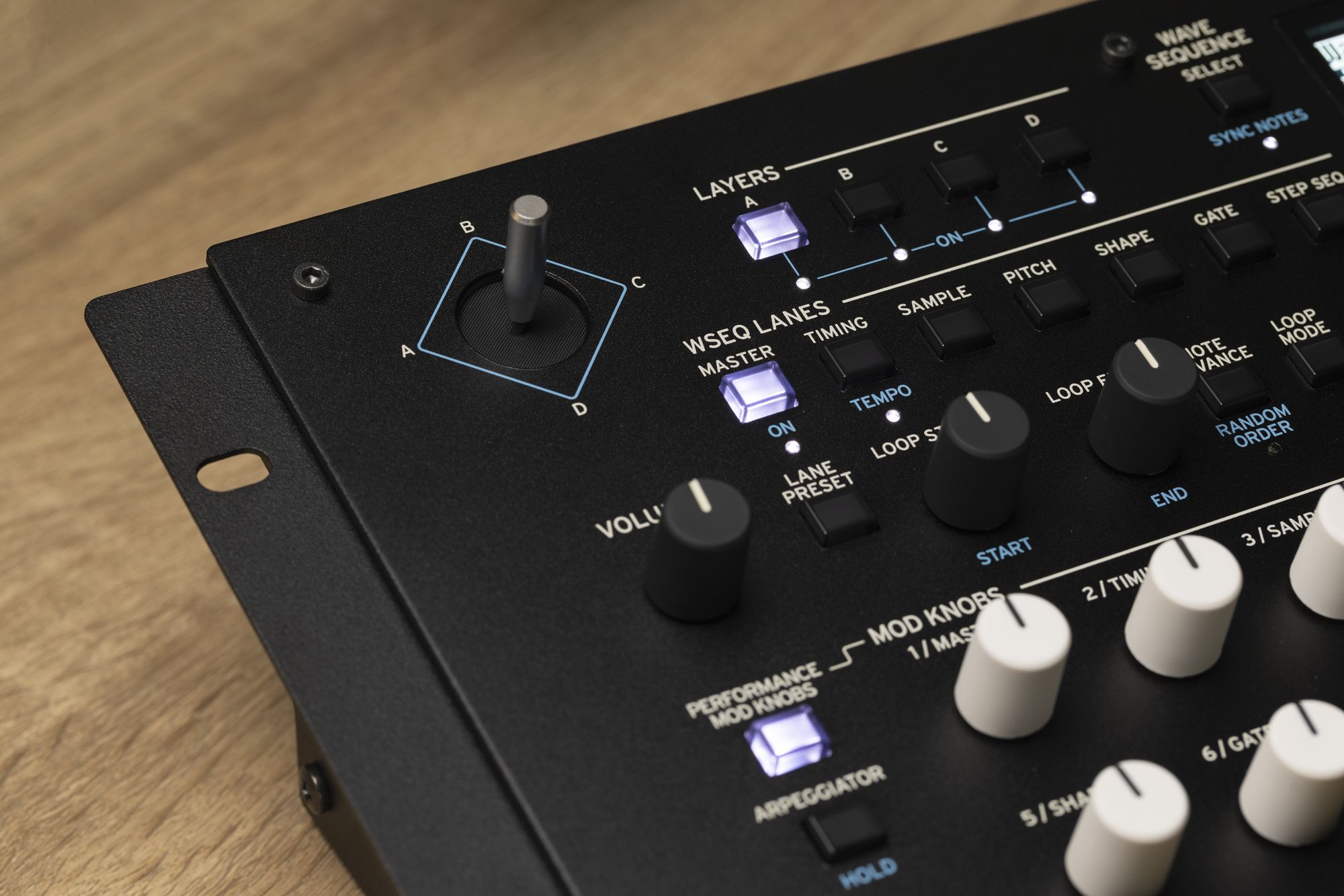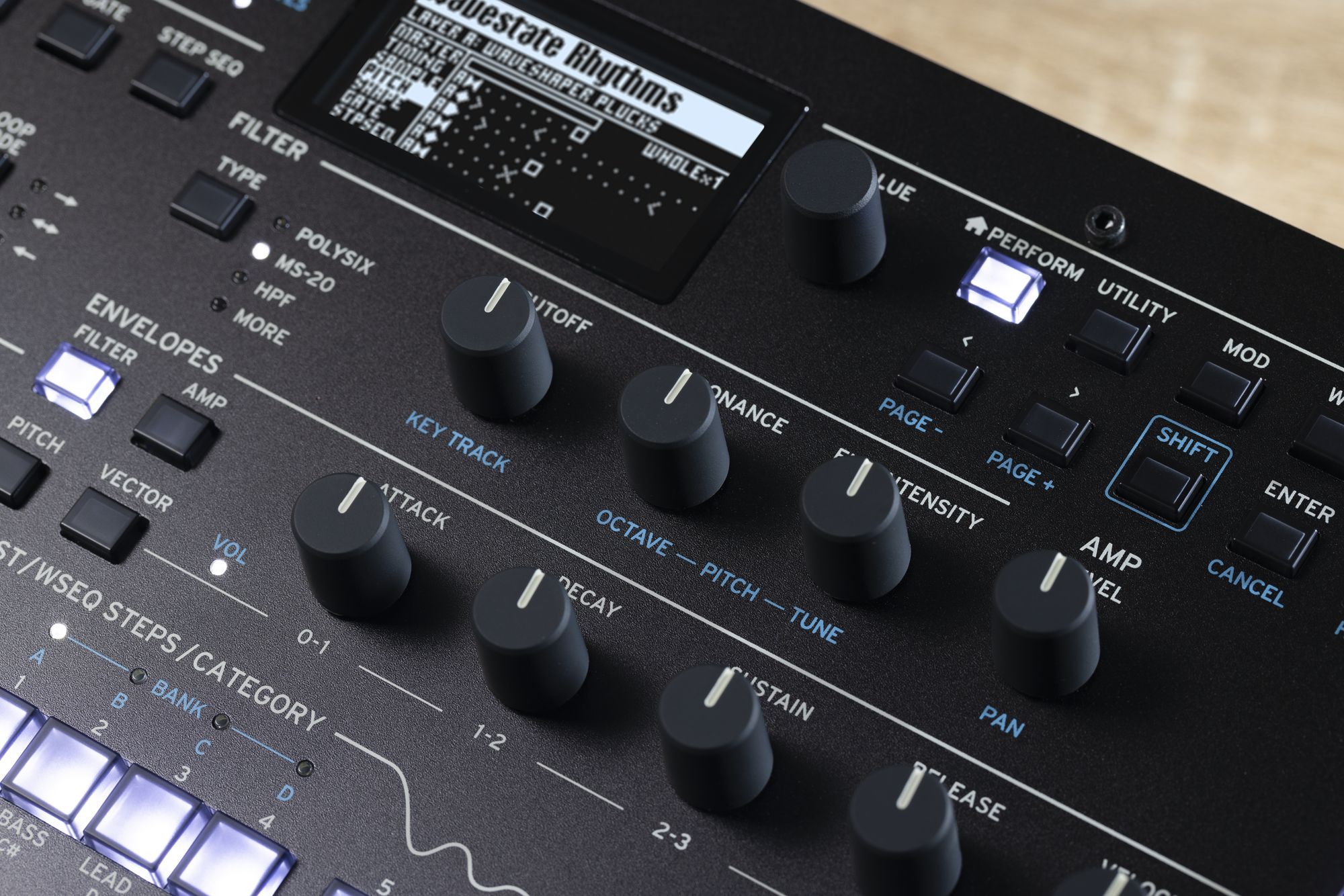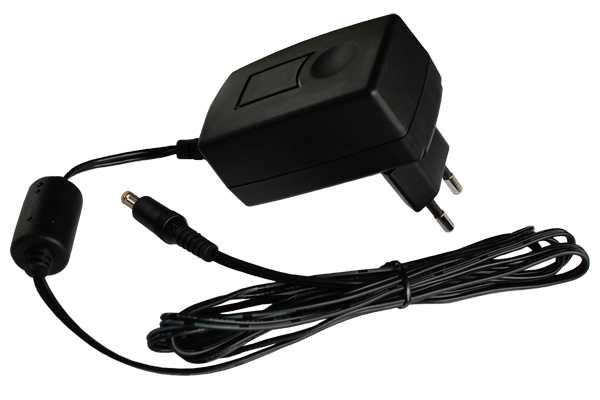Korg Wavestate Module
€645.00
Prices incl. VAT plus shipping costs
(Free shipping from 49,-€ order value within Germany)
Delivery on request
Technical data:
Desktop/rack version of the wavestate mkII
Wave Sequencing 2.0 sound generation
120 stereo voices
4 layers with vector joystick for crossfading
Clever lane structure for extensive animation of seemingly never repeating sounds
Multimode filter with 12 filter types, including LowPass, HighPass, Bandpass as well as MS-20 and Polysix
4 GB user memory for your own sample material
Support for the MIDI 2.0 property exchange standard
Support for polyphonic aftertouch
8 programmable MOD controls
3 envelopes + vector envelope
3 LFOs
2 modulation processors
2 key tracking processors
3 effect blocks + master reverb and 4-band equaliser
Inspiring randomise function for creating new sounds at random
Two different installation angles when used as a desktop module
19-rack mountable (4 U)
Fully compatible with wavestate, wavestate mkII, wavestate SE / SE Platinum and wavestate native
Power supply: Power supply unit (DC 12V, 2,500 mA, included)
Power consumption: 5 watts
Dimensions: 483 x 172 x 113 mm
Weight: 1.7 kg
Connections:
Headphone output
L/MONO/R outputs
Damper pedal input
MIDI IN/OUT
USB type B
The wavestate module is the space-saving modular version of the wavestate mkII and has the same controls and features as KORG's unique Wave Sequencing 2.0 synthesiser, with the exception of the keyboard and pitch/modulation wheels. Wave Sequencing 2.0 sound generation allows you to create complex soundscapes that are constantly changing and seemingly never repeat. This is achieved by stringing together several samples in a fixed sequence, which can be subsequently changed in real time using a clever lane structure with several tracks. A sound programme can consist of a total of four such sequences, which can be faded into one another using the vector joystick. For further modulation, the wavestate module offers a versatile multimode filter and an extensive effects section. This allows you to create unique rhythmic patterns or wafting pad sounds that are unimaginable with any other synthesiser. In addition to the regular controls on the user interface, there are also eight programmable MOD controls for direct intervention in the sound, which can even influence several parameters simultaneously. Thanks to KORG's own Smooth Sound Transition function, sounds and effects sound natural even after switching to the next sound programme and are not suddenly cut off. A clever randomise function allows you to create new sounds at random. For individual expansion, a total of 4 GB of additional memory is available for your own samples, which can be transferred to the instrument using editor software. The wavestate module also supports the MIDI 2.0 Property Exchange Standard and polyphonic aftertouch, making it an ideal addition to the KORG Keystage MIDI 2.0 keyboard. For use as a desktop module, you can choose between two different installation angles. Alternatively, the wavestate module can also be installed on 4 height units in a conventional 19-rack to save space.
Properties
| Polyphony: | 120 |
|---|---|
| Sound generation: | Digital |
Ansprechpartner:
Musik Meyer GmbH
KORG&MORE
Industriestrasse 20
35041 Marburg
E-Mail: info@korgmore.de
Heute und in Zukunft:
"Inspirierende Instrumente mit denen Musizieren Spaß macht."
Seit Gründung im Jahr 1963 ist es das Ziel von KORG, mit seinen Instrumenten neuartige musikalische Erfahrungen und Spielerlebnisse zu schaffen. Dieser Anspruch führte schon früh zur Erfindung der Entwicklung des ersten japanischen Synthesizers und des weltweit ersten Nadel-Stimmgeräts. Es folgten unzählige einzigartige Instrumente die Menschen weltweit Freude am Musizieren bereiteten. Auch weiterhin steht KORG für innovative und kompromisslose Instrumente in allerbester Qualität. Sie inspirieren professionelle Künstler und Komponisten zu Höchstleistungen, bleiben gleichzeitig dank durchdachter Bedienkonzepte für jedermann gut spielbar. Denn bei der Entwicklung der KORG Instrumente stehen immer die Wünsche und Bedürfnisse aller unserer vielen begeisterten Nutzer auf der ganzen Welt im Mittelpunkt - heute, und in Zukunft.
Sicherheits- und Warnhinweise:
Dieses Produkt enthält elektronische Bauteile und/oder wird mit elektrischer Energie betrieben.
Bitte verwenden Sie es ausschließlich gemäß der Bedienungsanleitung und mit geeignetem Zubehör.
⚠️ Schützen Sie das Gerät vor Feuchtigkeit, extremen Temperaturen und mechanischer Beschädigung.
⚡ Prüfen Sie Kabel, Netzteile und Anschlüsse regelmäßig auf sichtbare Schäden.
ℹ️ Weitere sicherheitsrelevante Hinweise entnehmen Sie bitte der beiliegenden Bedienungsanleitung.
ℹ️ Bei Fragen zur sicheren Verwendung wenden Sie sich gerne an unseren Kundenservice.
Login

